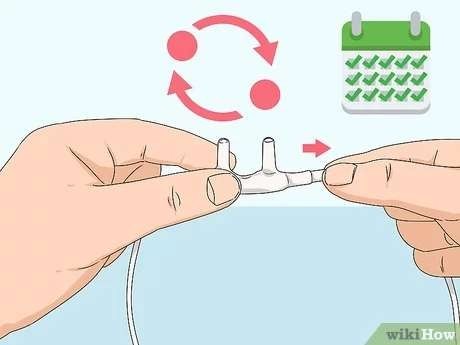A nurse is caring for a client who has dementia.
Which of the following actions should the nurse take to promote communication?
Face the client at eye level when communicating.
Offer correction of incorrect client statements.
Reorient the client to date and time with each encounter.
Avoid using gestures when communicating with the client.
The Correct Answer is A
Face the client at eye level when communicating.

This is because eye contact helps to establish rapport and trust with the client who has dementia and shows respect and attention. Facing the client at eye level also reduces distractions and background noise that might interfere with communication.
Choice B is wrong because offering correction of incorrect client statements can increase confusion, frustration, and agitation in the client who has dementia. Instead of correcting the client, the nurse should acknowledge their feelings and try to understand their perspective.
Choice C is wrong because reorienting the client to date and time with each encounter can be stressful and ineffective for the client who has dementia. Reorientation may work in the early stages of dementia, but as the disease progresses, the client may lose their ability to retain new information and may become more disoriented. Instead of reorienting the client, the nurse should use orienting names or labels whenever possible, such as “Your son, Jack” .
Choice D is wrong because avoiding using gestures when communicating with the client who has dementia can limit the nurse’s ability to convey meaning and emotion. Gestures can help to supplement verbal communication and provide cues for the client who has difficulty understanding words. However, the nurse should avoid using gestures that might be misinterpreted or threatening to the client, such as pointing or waving .
Nursing Test Bank
Naxlex Comprehensive Predictor Exams
Related Questions
Correct Answer is C
Explanation
Clean the cannula prongs daily.

This is because the nasal cannula can become contaminated with bacteria and mucus, which can cause infection and irritation of the nasal mucosa. Cleaning the cannula prongs daily with soap and water can prevent these complications.
Choice A is wrong because humidifiers can help moisten the dry oxygen and prevent nasal dryness and bleeding. Humidifiers should be used for oxygen flow rates higher than 4 L/min.
Choice B is wrong because the cannula prongs should be positioned curving downward in the nose, not upward. This allows for better alignment with the natural direction of airflow and reduces the risk of dislodgement.
Choice D is wrong because keeping the oxygen tubing off the floor is not a specific action for nasal cannula use. It is a general safety measure to prevent tripping and contamination of the tubing.
Correct Answer is D
Explanation
The nurse should determine if the client has prepared their advance directives, which are legal documents that specify the client’s wishes regarding medical care in case they become incapacitated. Advance directives can include a living will, a durable power of attorney for health care, or a do-not-resuscitate order. The nurse should respect the client’s autonomy and right to self-determination by asking about their advance directives and ensuring that they are documented and followed.
Choice A is wrong because the nurse should not delay the admission while the client fills out the facility’s advance directives form.
The client has the right to refuse or accept any treatment, including filling out an advance directives form.
The nurse should inform the client about the benefits of having advance directives, but should not coerce or pressure them to complete one.
Choice B is wrong because the nurse should not confirm with the client’s family that the consent form has been signed.
The consent form is a legal document that indicates that the client has given informed consent for the surgery, which means that they have received adequate information about the procedure, its risks and benefits, and alternative options.
The consent form should be signed by the client, unless they are a minor, mentally incompetent, or unable to communicate.
The nurse should verify that the consent form has been signed by the client or their legal representative before the surgery.
Choice C is wrong because the nurse should not explain to the client that signing the facility’s consent form means they cannot refuse care.
Signing the consent form does not waive the client’s right to withdraw consent at any time before or during the surgery.
The nurse should inform the client that they can change their mind and refuse care at any point, and that their decision will be respected and honored.
Whether you are a student looking to ace your exams or a practicing nurse seeking to enhance your expertise , our nursing education contents will empower you with the confidence and competence to make a difference in the lives of patients and become a respected leader in the healthcare field.
Visit Naxlex, invest in your future and unlock endless possibilities with our unparalleled nursing education contents today
Report Wrong Answer on the Current Question
Do you disagree with the answer? If yes, what is your expected answer? Explain.
Kindly be descriptive with the issue you are facing.
